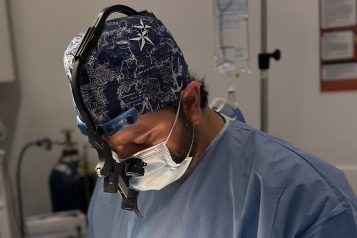In recent years, the multifaceted applications of Botox have extended beyond its well-known cosmetic uses, captivating the attention of researchers and medical professionals alike. A particularly intriguing avenue of exploration involves the therapeutic potential of Botox in providing relief for head and neck pain. Beyond its acclaimed ability to smooth wrinkles, Botox’s neurotoxic properties have paved the way for innovative approaches to address various medical conditions, including chronic pain. Join us on this journey with Union Square Dental Practice as we delve into the transformative possibilities that Botox brings to the realm of therapeutic interventions for head and neck pain.
 Photo Credit: Courtesy of Union Square Dental Practice
Photo Credit: Courtesy of Union Square Dental Practice
How Botox Effectively Treats Head and Neck Pain
Botox, scientifically referred to as Botulinum toxin, exerts its remarkable effects by intercepting the presynaptic release of neurotransmitters at the neuromuscular junction. This mechanism induces a reversible, partial paralysis and subsequent atrophy of the targeted muscle. When strategically injected into pain trigger points, Botox effectively diminishes both the size and activity of the muscle, leading to the elimination or substantial reduction of pain. As an added benefit, this targeted approach concurrently addresses wrinkles on the skin, providing a dual advantage in pain management and cosmetic enhancement.
Optimal Botox Injection Guidelines for Head and Neck Pain Relief
The requirement for Botox units to address pain is unique to each individual, contingent upon factors such as muscle size, pain severity, and its specific location. During the consultation visit, patients undergo a thorough evaluation to determine the optimal number of units needed for their personalized treatment plan. Impressively, the effects of this targeted approach can endure for a substantial period, typically ranging between 3 to 6 months.
Breaking Boundaries: Botox vs. Traditional Approaches
Patients can anticipate a discernible decrease in pain levels within 72 hours of receiving a Botox injection, with the maximum relief typically realized within two weeks. Notably, many patients find themselves discontinuing painkiller usage after this initial two-week period, enjoying sustained relief for up to 3 to 6 months. This shift away from frequent painkiller reliance not only enhances the quality of our patient’s lives but also contributes positively to their long-term health. It’s worth noting that some individuals opt to concurrently engage in Physiotherapy alongside Botox treatment, often experiencing accelerated healing and enhanced results through this synergistic combination.
 Photo Credit: Courtesy of Union Square Dental Practice
Photo Credit: Courtesy of Union Square Dental Practice
Fast-Track to Relief
Following the administration of Botox, patients typically begin to experience the initial effects within the initial 72 hours, marking the commencement of its transformative impact. During this initial phase, subtle changes become noticeable as the neurotoxin begins its work on the targeted muscles. However, the true zenith of efficacy unfolds over the subsequent two weeks, as the Botox settles into its full therapeutic potential.
Beyond Temporary Fixes
For some of our patients, Botox injections emerge as the most effective and low-risk solution for alleviating chronic pain. Following unsuccessful attempts with various treatments, many discover Botox to be a swift and uncomplicated route to achieving a pain-free life.
Reach out today for your consultation and entrust your evaluation to the expertise of Dr. Nazanin Hakim and Dr. Mahsa Hakim. Their comprehensive assessment considers your unique condition, medical history, and overall health, ensuring a personalized approach to determine the suitability of Botox as an effective treatment option for you.
For more information, visit Dr. Brian A. Levine's social media:

























